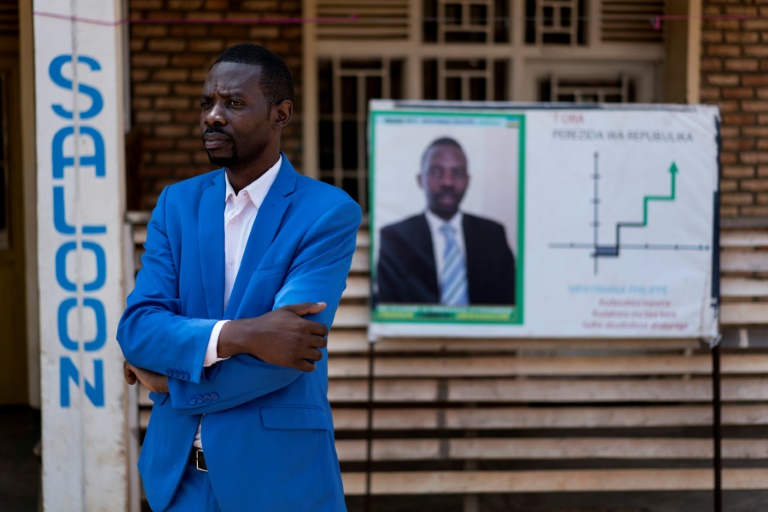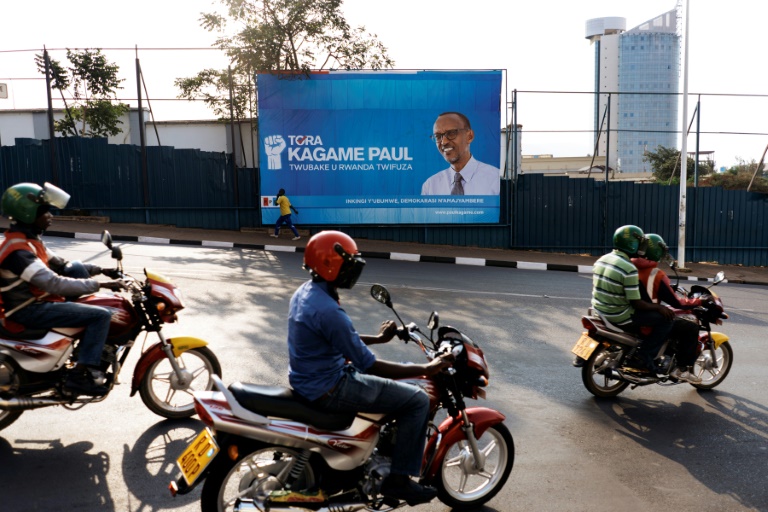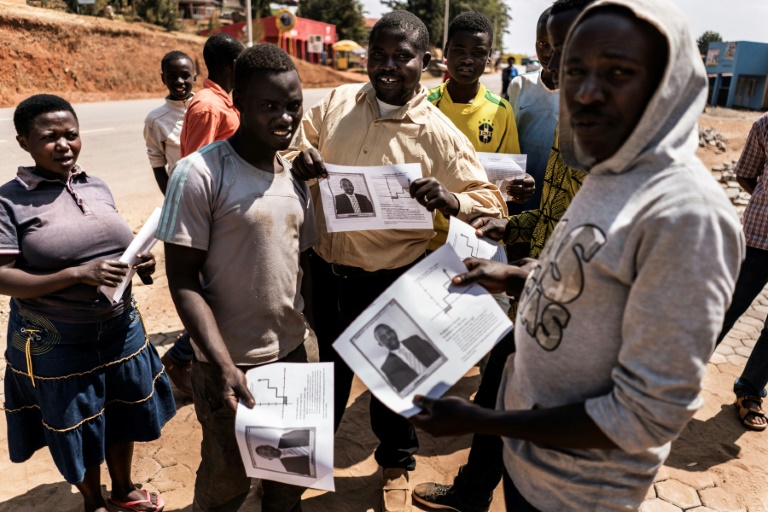In a two-year-old mall in Kigali's city centre, bored shopkeepers chat idly as muzak echoes through the quiet interior, with barely a client in sight on a weekday morning.
The gleaming building is one of several developments that have shot up in the Rwandan capital, a window to an ambitious future in which a thriving middle class built on a services-based economy will have replaced a nation of largely poor, rural farmers.
But the Rwandan dream is decades away and observers warn that aggressive and costly infrastructure expansion — mostly with public funds — is a risky gamble in a tiny market where 39 percent of the population still lives on less than two dollars a day.
“Development is good but we are struggling, the rent is killing us,” said the 24-year-old owner of a cosmetics store. He says the lack of customers has caused two shops to close down. Many others remain unoccupied.
The pride of the city is the government-funded Kigali Convention Centre, a sprawling complex inaugurated in 2016 whose colourful dome lights up the hilly capital at night — a symbol of the country’s hopes of becoming a hub for business tourism.

Rwandan independent candidate Philippe Mpayimana is challenging incumbent President Paul Kagame
The government has also invested massively in national airline Rwandair, buying a fleet of 12 aircraft and expanding to 22 destinations, including London and soon, New York.
To the south of Kigali, construction has started on an $800-million (687-million-euro) new international airport, a public-private partnership with Portugal’s Mota-Engil.
Engineers have also rolled out 4,500 km (2,800 miles) of fibre optic cable around the Land of a Thousand Hills.
– ‘A very brave gamble’-
Rwanda sees these projects as the crucial foundation of its economic blueprint to become a high-income country by 2050.
This will require multiplying GDP per capita by nearly 20 and achieving a growth rate of 10 percent per year — a mind-boggling task.

President Paul Kagame has been in charge of Rwanda since 2000
A European diplomat told AFP the government’s investment drive was “overly optimistic”.
“The conference centre is the most expensive building in Africa. We were told it cost $300 million … but I think it cost more like $800 million. A lot of the conferences are government-type conferences, they are not really earning money from them.
“To us at the moment it looks like a very brave gamble, maybe strategically a very good one but we don’t quite see … where is this business going to come from?” he said, referring to both the conference centre and the airline.
However observers agree that there are few other options for the tiny, landlocked nation with barely any mineral resources.
“What (Rwanda) does have is it is very well organised, it has security and good transportation links,” said IMF representative Alun Thomas in an interview with AFP.
“They are playing to their competitive advantage. It has risks but I think it is the right strategy. You have to take risks to develop and grow.”
– Safe, corruption free –
International donors wax lyrical over the radical transformation of the central African nation 23 years after some 800,000 people, mostly from the Tutsi minority, were slaughtered in a 100-day genocide.
Growth has averaged seven percent over the past two decades, poverty rates have dropped, health indicators have improved and the World Bank classes Rwanda as the second easiest African country in which to do business.
Kigali meanwhile, is clean, green, and not plagued by petty crime and corruption seen elsewhere in the region.

International donors praise Rwanda’s transformation since a genocide ravaged the country
However outside the rising centre, some 70 percent of the population tend small agricultural plots that cling to steep slopes or nestle in the valleys.
With the population of 12 million set to double by 2050, there is no more place for these farmers to expand.
“We are one of the most densely populated countries so we don’t see land and agriculture as a key factor in our future,” said Clare Akamanzi of the Rwanda Development Board.
Facing the Rwandan realities means trying to improve agricultural productivity in the short and medium term, creating job skills that can be easily transferred to the industrial sector while pumping money into education and developing the knowledge-based economy in parallel.
“(The investment) is not risky at all. The question is how do you phase your ambition and how do you create milestones for your ambition, it is a journey,” she said.
– ‘I need work’ –
However the economy of Rwanda, whose about 30 percent of the national budget comes from foreign aid, slowed to about two percent growth at the beginning of 2017 as the construction boom levelled out and foreign reserves ran low due to government spending.
At the same time citizens’ pockets were hard hit by soaring inflation due to a drought.
The IMF expects growth to recover, but for most life remains a struggle.
In the outlying Kigali suburb of Batsinda — which has a view of the new city skyline a few hills away — a local market bustles in a way the shiny new malls do not, while crowds of young men idle in the street.
Some say they can only afford one meal a day.
“I was born here, and so when I look on the other side I see the development is there, but as a citizen I need work. You can’t be happy without a job,” said Diogene Gatena, 41.






